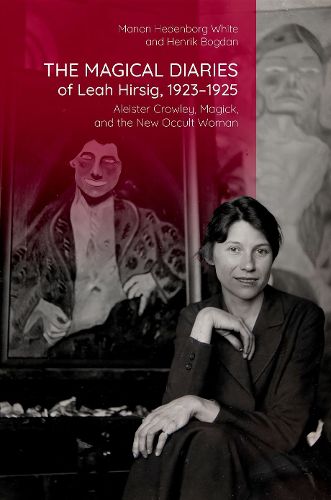Readings Newsletter
Become a Readings Member to make your shopping experience even easier.
Sign in or sign up for free!
You’re not far away from qualifying for FREE standard shipping within Australia
You’ve qualified for FREE standard shipping within Australia
The cart is loading…






Leah Hirsig was a Swiss-American occultist, follower and lover of the prominent British occultist Aleister Crowley in the 1920s. The self-styled Great Beast 666, Crowley was also the founder and prophet of the new religion Thelema. This annotated edition of Hirsig's complete magical diaries and previously unpublished correspondence between her and Crowley sheds new light on their relationship and the broader role of women in twentieth-century occultism. A schoolteacher by training who lived, loved, and travelled independently, Hirsig embodied the ideals of the New Woman, particularly in her attraction to a counter-normative occult movement. In 1920, Hirsig was appointed Crowley's Scarlet Woman, a title that identified her as the earthly avatar of the Thelemic goddess Babalon and as Crowley's feminine counterpart. In this role, Hirsig was essential in stewarding the Thelemic community during an eventful period, which coincided with the establishment of an Abbey of Thelema in Cefalu, Sicily, and the authorship of several of Crowley's important magical works. In 1924, Hirsig was replaced as Scarlet Woman, but she remained devoted to Thelema for several years. Hirsig's magical diaries provide a unique window into the possibilities and challenges faced by women occultists in the early twentieth century. Her writing highlights how occult movements offered heightened opportunities for women's leadership while also being impacted by wider gender inequalities. The diaries are presented with a selection of previously unpublished letters and poems by Hirsig and Crowley, providing insight into their relationship and the period from Hirsig's attraction to Thelema in 1919 until her departure from the movement in 1927-1930. The book also includes an extensive editorial introduction that situates Hirsig within Thelema, twentieth-century occultism, and women's changing roles during this period.
$9.00 standard shipping within Australia
FREE standard shipping within Australia for orders over $100.00
Express & International shipping calculated at checkout
Leah Hirsig was a Swiss-American occultist, follower and lover of the prominent British occultist Aleister Crowley in the 1920s. The self-styled Great Beast 666, Crowley was also the founder and prophet of the new religion Thelema. This annotated edition of Hirsig's complete magical diaries and previously unpublished correspondence between her and Crowley sheds new light on their relationship and the broader role of women in twentieth-century occultism. A schoolteacher by training who lived, loved, and travelled independently, Hirsig embodied the ideals of the New Woman, particularly in her attraction to a counter-normative occult movement. In 1920, Hirsig was appointed Crowley's Scarlet Woman, a title that identified her as the earthly avatar of the Thelemic goddess Babalon and as Crowley's feminine counterpart. In this role, Hirsig was essential in stewarding the Thelemic community during an eventful period, which coincided with the establishment of an Abbey of Thelema in Cefalu, Sicily, and the authorship of several of Crowley's important magical works. In 1924, Hirsig was replaced as Scarlet Woman, but she remained devoted to Thelema for several years. Hirsig's magical diaries provide a unique window into the possibilities and challenges faced by women occultists in the early twentieth century. Her writing highlights how occult movements offered heightened opportunities for women's leadership while also being impacted by wider gender inequalities. The diaries are presented with a selection of previously unpublished letters and poems by Hirsig and Crowley, providing insight into their relationship and the period from Hirsig's attraction to Thelema in 1919 until her departure from the movement in 1927-1930. The book also includes an extensive editorial introduction that situates Hirsig within Thelema, twentieth-century occultism, and women's changing roles during this period.